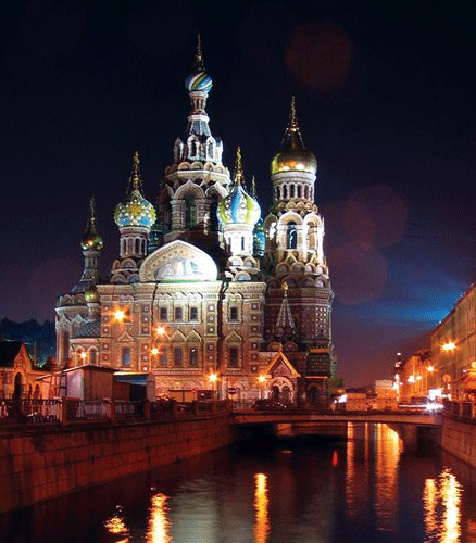Baltic Cities, Part II: St. Petersburg
BY DERYA SONER (MBG/IV)
a_soner@ug.bilkent.edu.tr
The city of St. Petersburg feels like the embodiment of a different character in each season. In winter it is an old lady: white, cold, slow, and sophisticated. In summer it is a young girl: lively, colorful, and hip. Until mid-April, the city is covered in snow and the Neva River is frozen; you can sometimes spot some eccentric people jumping into the frozen river through a whole in the ice. Only the historic buildings seem to have color; the rest, which is mostly blocks of apartments, is usually grey, and seems to carry hints of communism. Most of the trees are not evergreen, so the city is mostly white and gray during the winter. There are, however, great activities to experience, such as enjoying a Russian meal in an ancient castle with some warm Borscht soup, caviar, and vodka served in wooden cups or seeing an exquisite sample of Russian ballet.
In the summer, the city is cloaked in a whole different persona; the trees are green, the streets are full of young people, and the Neva River is filled with beautiful boats. The sun never seems to set, and the night is very short, decorated with beautiful city lights.
 The people of St. Petersburg, as all Russians, are very friendly, sincere, and helpful. Their family values and traditions are quite like Turkishpeople, and they are also very hospitable. In fact, an old Russian house looks pretty much like an old Turkish house, with white lacework laid over an old television, wooden closets, pale carpets, and lacy curtains.
The people of St. Petersburg, as all Russians, are very friendly, sincere, and helpful. Their family values and traditions are quite like Turkishpeople, and they are also very hospitable. In fact, an old Russian house looks pretty much like an old Turkish house, with white lacework laid over an old television, wooden closets, pale carpets, and lacy curtains.
As an ex-communist country, I expected the people of Russia to be somehow more equal, but there is a huge gap between the rich and the poor, as there is in Turkey. It seems that the "all are equal but some are more equal" phenomenon that caused the corruption of communism reveals itself at this point. There is one thing we should learn from Russians though; there are more women with a university education than men. But the main concern of the people seems to be health insurance; they feel that old people are not taken well care of, and this seems to be Russia's main difference from other Baltic countries. One last bit of comparison: St. Petersburg has a tram system that seems to cover the whole city, and it is quite cheap, making transport within the city seem quite easy and environmentally friendly, at least to a person like me who was raised in Istanbul and is more used to seeing old busses with trails of black smoke behind them.
The city of St. Petersburg is home to a lot of wealth and art. Catherine's Palace is home to a display of wealth that sometimes reaches the point of the obscene with rooms covered in gold and in amber, where the walls and chandeliers are so shiny you can't even look at them. The Hermitage Museum, one of the largest and oldest museums in the world, displays items ranging from Egyptian antiquities to Renaissance, Baroque, Neoclassical, Impressionist, and post-Impressionist art, including prehistoric samples from Turkey, as well as masterpieces by Raphael, Michelangelo, Rembrandt, Renoir, Monet, Van Gogh, Gauguin, and Picasso. The Church on Spilled Blood is also a beautiful place to see and is reminiscent of Kremlin Palace with onion-shaped, colorful domes. The church claims to have more mosaics than any other church in the world.
s there is still much more to tell about the beautiful cities of the Baltic Sea, let us meet again in Baltic Cities Part III, where we can take a walk around Tallinn and Copenhagen.